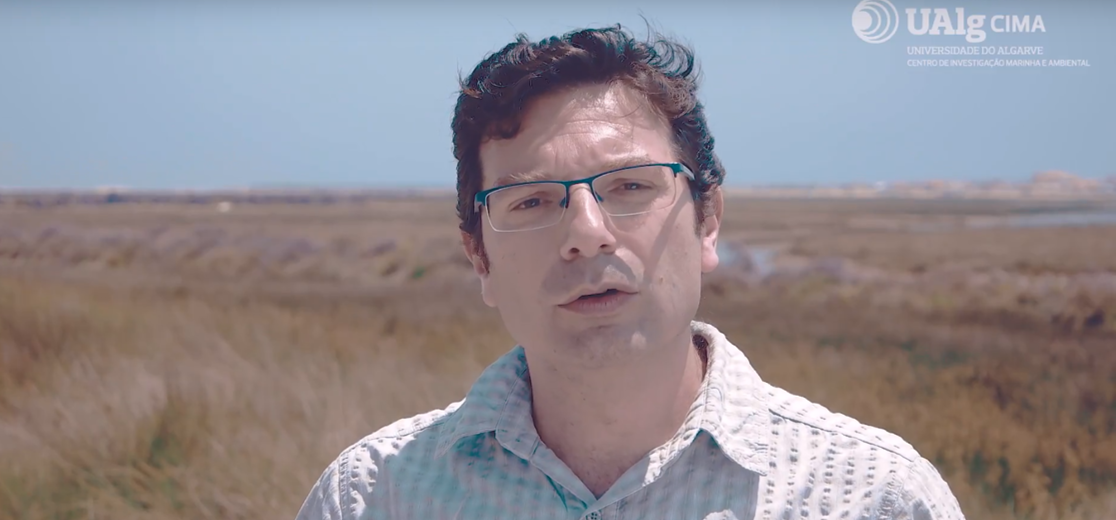


Theocharis Plomaritisis is a CIMA researcher that belongs to the team that published the article "Sandy beaches around the world under the threat of climate change", a study published yesterday in the journal Nature Climate Change.
Erosion is a major problem facing sandy beaches that will worsen with climate change and consequent sea level rise. Half the world's beaches, many of which are in densely populated areas, could disappear by the end of the century. Climate mitigation could lessen retreat by 40%.
A recent JRC study shows that the world’s sandy beaches are under severe threat due to global warming.
Sandy beaches occupy more than 30% of the global coastline. They are important habitats and provide important coastal recreational areas. They also serve as natural buffer zones that protect the coastline, backshore coastal ecosystems and assets from waves, surges and marine flooding. Their function as shock absorbers will become increasingly important with rising sea levels and more intense storms expected from climate change.
However, climate change will accelerate erosion that could make more than half of the world’s sandy beaches completely vanish by the end of this century in case of no mitigation. Fuelled by demographic change and urbanisation along coastlines, this is likely to result in more people and economic value being exposed to coastal erosion in the decades to come.
Greenhouse gas emission mitigation could prevent 40% of the projected erosion. This means that, even when global warming is curbed, societies will need to adapt and better protect sandy beaches from erosion, which is also one of the main messages of the Paris Agreement on climate.
Human presence makes sandy beaches less resilient
Sandy coastlines form an extremely dynamic environment due to altering wave conditions, sea levels and winds, as well as geological and anthropogenic factors. By nature they are resilient to natural climatic variability, as they can accommodate higher seas and marine storms by retreating and adapting their morphology. However, natural sandy beaches are ever more under pressure as a result of human development, a situation that could become worse if contemporary coastal urbanization and population growth continues. With backshores being increasingly occupied by human settlements, sandy shorelines worldwide are losing their natural capacity to accommodate or recover from erosion. In the meantime, damming of rivers for reservoirs and human development retains sediment upstream that would naturally feed beaches. As a result, a substantial proportion of the world’s sandy coastline is already eroding, a process that could accelerate with rising sea levels in view of global warming.
Predicting the future of sandy beaches
Scientists from the European Commission’s Joint Research Centre have launched the first global assessment of future sandy shoreline dynamics considering all key drivers. They combined 35 years of satellite observations of coastal evolution with 82 years of climate and sea level rise projections from different climate models. In addition they simulated more than 100 million storm events and quantified the resulting coastal erosion globally.
Climate mitigation and adaptation challenges ahead
The study shows that without climate mitigation and adaptation almost half of the world’s sandy beaches are under threat of near extinction by the end of the century. Apart from the loss of valuable ecosystems, socioeconomic implications can be severe, especially in poorer, tourism dependent communities where sandy beaches are the main tourist attraction. Small Island nations are among these more vulnerable regions.
In most parts of the world, projected shoreline dynamics are dominated by sea level rise and moderate greenhouse gas emission mitigation could prevent 40% of shoreline retreat globally. Yet, in certain regions the effects of climate change are counteracted by accretive ambient shoreline changes; e.g. in the Amazon, East and Southeast Asia and the North Tropical Pacific.
Commission is already working to address these challenges
The EU is committed to mitigate climate emissions. With the Green Deal for Europe it strives to achieve climate neutrality in 2050.
The EU Strategy on Adaptation to Climate Change aims at making Europe more resilient and minimise the impact of unavoidable climate change. It stresses that coastal zones are particularly vulnerable to the effects of climate change, which challenges the climate resilience and adaptive capacity of our coastal societies. This requires a strong EU Strategy and preparedness actions by Member States aimed at reducing the vulnerability of their citizens and economies to coastal hazards in order to minimize future climate impacts in Europe.
The EC published the recommendations for Integrated Coastal Management that build further on the principles and elements set out in the Council Recommendation on Integrated Coastal Zone Management of 2002 and the Protocol to the Barcelona Convention on Integrated Coastal zone Management, ratified by the EU in 2010. This policy instrument requires establishing a coastal setback zone, extending at least 100 m landward from the highest winter waterline, taking into account, inter alia, the areas directly and negatively affected by climate change and natural risks.
The EC Floods Directive requires Member States to assess if all water courses and coast lines are at risk from flooding, to map the flood extent and assets and humans at risk in these areas and to take adequate and coordinated measures to reduce this flood risk. Maintaining healthy sandy beaches is an effective coastal protection measure, which in addition has minimum environmental effects.
Several sandy environments are included in the EC Habitats Directive as they are related to protected species and many of the NATURA protected areas include sandy coastlines.
The Sendai Framework for Disaster Risk Reduction 2015-2030, the Paris Agreement on Climate Change and the Sustainable Development Goals have set the agenda for reducing disaster risks through sustainable and equitable economic, social, and environmental development.
In this context, poorer low-lying countries remain particularly vulnerable to coastal hazards and huge investments or changes in these societies may be needed to close the vulnerability gap with richer countries.
Link to the article: https://www.nature.com/articles/s41558-020-0697-0